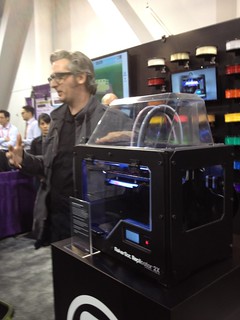As a sort of wrap-up for my CES2013 coverage, I decided to advertise and present a live, interactive online webinar driven by Google Hangouts. That happened today, and this is the resultant video presentation. The first 57 minutes and 30 seconds or so is me talking through a slideshow on trends and the effect said trends may have on libraries, while the last half-hour is me taking questions from the chat room, twitter, and from the brave souls who took time out of their day to join me in the Hangout and ask questions.
As I said in my initial plan for attending and covering CES2013, “…for the very first time decided to experiment with crowdfunding something I’m doing and ask for donations. Or, to put it a different way, I’m becoming a busker for the trip.” This trip had no sponsors, and while I haven’t gotten the full stats on how many people watched the Hangout, watched my video reports, read my blog entries, or just laughed at some of my pictures, at this point many dozens-to-hundreds of people have seen my work. Of those, exactly 4 have decided that what I was doing was worth paying for.
This isn’t me complaining about that! This was and is an experiment, and if I don’t let people know the results, then it’s not really an experiment that others can learn from. I promised transparency, so here it is: I received 4 donations from 4 individuals: $10, $20, $20, and one incredibly kind soul for $50, bringing my grand total for donations to $95.30 after Paypal fees. I find this a fascinating response, given that it is routine for educational opportunities exactly of this sort (literally, I have given them) to cost many hundreds of dollars. This was free, available for anyone…and yet. And yet.
Lots to think about! But in the meantime, I’m going to continue to produce content and write and speak and read and think about technology and libraries. If you think what I’ve done here is worth paying for, I’m going to leave the donation option open for a bit longer, just to see if people finding this after the fact decide to chip in. I will, of course, continue to report on the experiment. Thanks to everyone who watched, commented, joined in, or hopefully learned something about the tech of CES2013.
